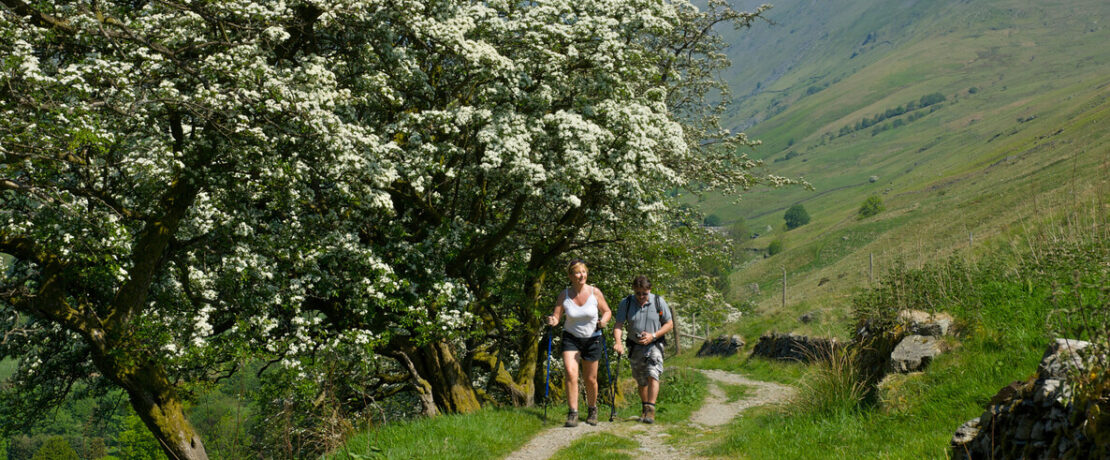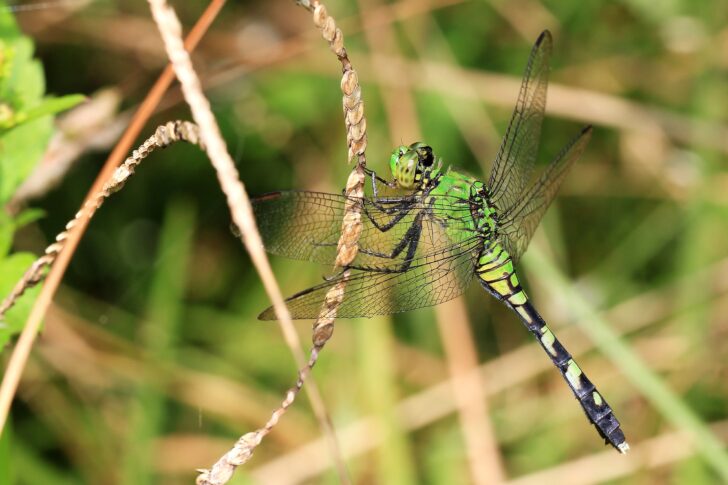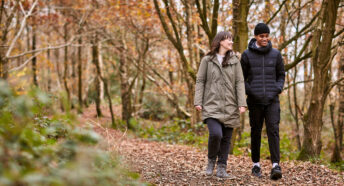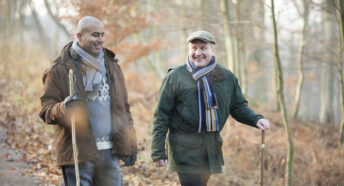Coming to the countryside near you: wildlife in May
May always starts with a spring crescendo. Dawn Chorus Day falls on the first of the month, an ornithological ensemble to ring in the last month of the season.
Due to a chilly start to spring, nature has been slower this year, but we continue to meander towards the peak of the year. To us, February may be the month of love – but in nature, May is all about breeding. Male hedgehogs begin to ‘rut’, fighting for female affection. Fox cubs take their first tentative steps above ground and nests are woven in trees and hedgerows, ready to cradle eggs of all shapes and sizes.
Dragonflies
In ponds, dragonfly larvae will begin to emerge from the depths and head into the light. Clinging to tall wetland plants with hooked legs, they climb out, typically in the morning. They emerge from their larval exoskeleton in their adult form and wait for the sun’s rays to dry out and harden their new iridescent wings.
The larvae will have been living in the mud for several months or even years before emerging. The change takes around three hours and leaves them highly vulnerable; they are weak and easy prey for a hungry predator. Their maiden flight is short, and they must take cover quickly – a burst of rainfall could damage their newly formed body.
After time away from the water, dragonflies return to mate and lay eggs. The adults will only live for a few weeks, but beneath the surface, the life cycle will be beginning again.
Cockchafers
Affectionately known as May bugs, or sometimes doodle bugs, cockchafers are large scarab beetles that live as larvae beneath the soil for around five years. These large flying beetles take to the skies like drunken spitfire pilots, erratically bumbling noisily through the air. Their large round eyes and fan-like antennae add to their character.
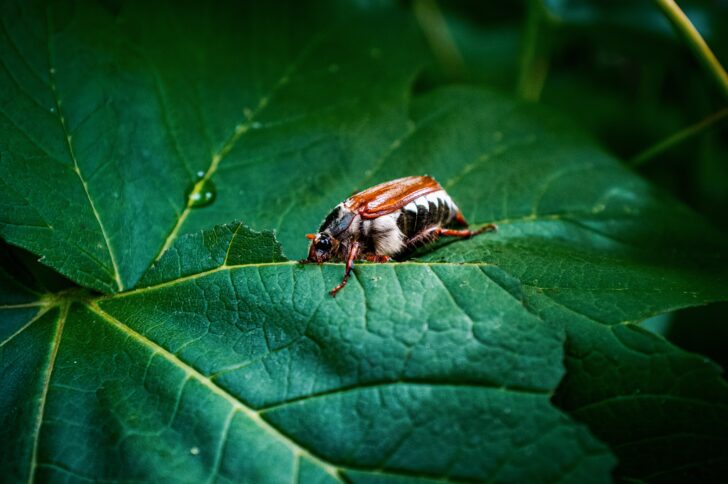
Cockchafers are attracted by light (they are dusk flyers) and so are quite clumsy. They tend to bump into windows, heads and houses, and it’s this trait that has secured them a place in our hearts. Their larvae (nicknamed rookworms because they are a particular treat for corvids), decimate crops due to feeding on vegetable roots. The adults will only be around for about six weeks, so get your moth traps out and see if you can attract one over to say hello.
Hazel dormice
In the hedgerows, hazel dormice are awakening. They begin to stir in April, but during May they will be active, foraging for insects. Being nocturnal creatures, spotting one might be a little tricky, but finding one of their abandoned nests is a little easier. They’re made of grass and leaves woven into balls that fit into your palms. Sadly, in the last 25 years, we have lost 55% of our dormice populations and they are extinct from 17 British counties due to habitat degradation and climate change. Later this month females will give birth in newly built nests tucked into tree holes or hedgerows, the first of two litters during the year.
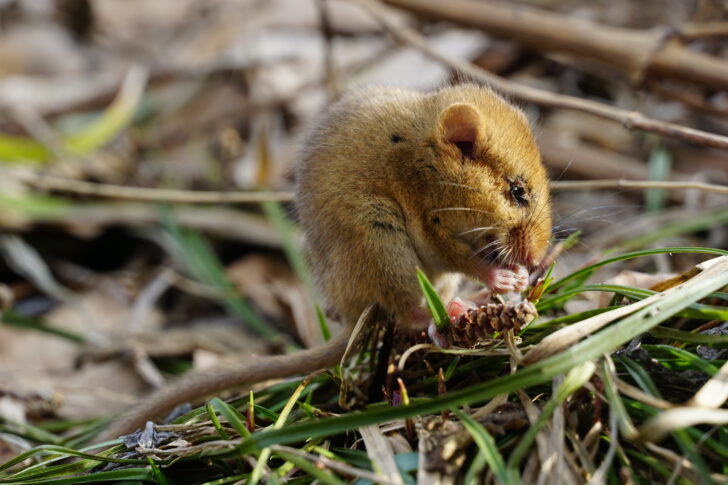
Cuckoo
The cuckoo arrives from Africa in the spring for sole the purpose of breeding. The first sign of a cuckoo is its unique, two-tone call, echoing around valleys of heathland, scrubland, woodland and coastal areas. May is breeding season, but the cuckoo is different to any other bird as they don’t raise their own broods. These cheeky birds will lay their eggs in another bird’s nest, such as a reed warbler or meadow pipit, and let them do all the hard work. The species they choose have a similar looking egg, enough to confuse the forced foster parent to think the egg is one of their own.
When the parent leaves the nest vacant, cuckoos will sneak in and lay an egg – just one per nest. They sometimes even eat an egg or two from the nest to make space for her own. As the eggs hatch, the cuckoo chick will mimic the call of its fellow nest dwellers, ridding any doubt that it belongs. Cuckoo chicks will grow larger and more rapidly than the other chicks and the parents will struggle to keep up with its rapacious appetite.
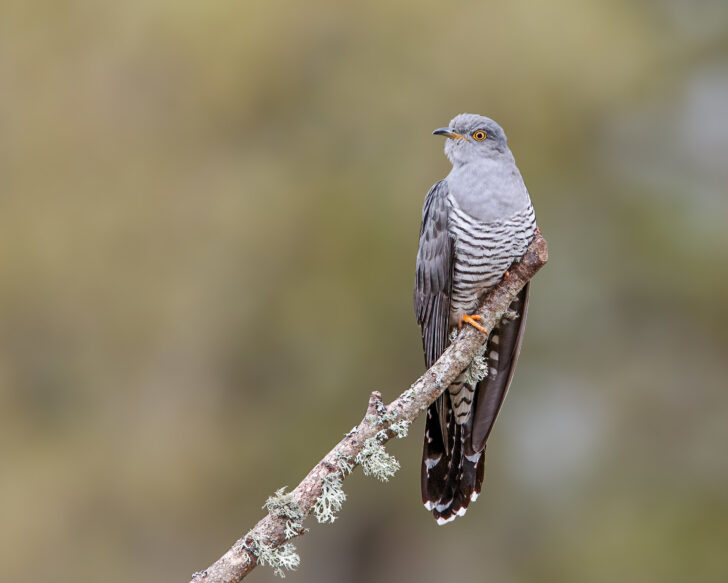
Over time, the overstretched parent will likely eject the other babies, it’s own true young, to satisfy the baby cuckoo. After three weeks the chick will fledge if the nest hasn’t already collapsed beneath its weight. Female cuckoos can lay up to 25 eggs during the season – meaning 25 other birds are duped into raising a chick that is not their own!
Under threat due to the decline of insects, the number of cuckoos in England is declining. This is believed to be due to a lack of food availability on their migration route. Populations of cuckoos that head to Wales and Scotland are more stable, and interestingly their routes differ.
Explore the countryside in May
The dawn chorus is reaching its peak, and the days are warming up. It’s the perfect time to explore your local countryside and green spaces, and spot wildlife. Whether it’s a stroll in your local park or a circular walk in the countryside, there’s lots to see in May. If you manage to get any wildlife snaps, get in touch with us on Facebook, Twitter or Instagram. We’d love to share them! Alex is back next month with what wildlife to look out for in June.
About the author
Alexandra Pearce-Broomhead is a writer and occasional Guardian Country Diarist from Cornwall. She writes about nature and place, and the human relationship with both. Her work features on BBC Wildlife and BBC Countryfile.
